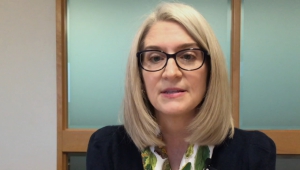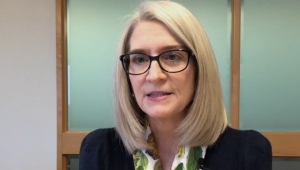Video Library Categories
- Acuity
- AONN+ Memories
- Barriers to Care
- Best Practices
- Best Practices in CAR T-Cell Therapy
- BOLD
- Breast Cancer
- Cancer Biomarkers
- Cancer-Related Legal Issues
- CAPE CLL
- Caregivers
- Case Studies
- Chronic Disease
- Clinical Pearls
- Clinical Trials
- CoC Standards
- Commission on Cancer
- Committees
- Conference Testimonials
- Coordination of Care/Care Transitions
- COVID-19
- Distress Screening
- Evidence into Practice
- Financial Navigation
- Financial Toxicity
- Genetics and Genomics
- Health Disparities
- Heroes of Hope
- Immunotherapy
- Integrative Cancer Care
- Local Navigator Networks
- Member Benefits
- Membership Testimonials
- Mental Health
- Navigation
- Navigator Anecdotes
- Navigator FAQs
- Networking and Community
- Novice Navigators
- Nurse Navigation
- Nurse Navigators Video Vignette Series
- Oncology Care Model
- ONE Award
- Operations Management
- Patient Advocacy/Empowerment
- Patient FAQs
- Patient Navigators
- Policy and Advocacy
- Precision Medicine
- Products and Devices
- Professional Roles and Responsibilities
- Psychosocial Support Services/Assessment
- Reducing Racial Disparities in Cancer Care
- Research
- Research/Quality/Performance Improvement
- Role of the Navigator
- Sexuality and Cancer
- Standardized Metrics
- Starting a Navigation Program
- Support Services
- Survivorship
- Technology
- Telehealth
- Tools and Resources
- Town Hall and Panel Discussions
- Tumor Boards
- Value-Based Care
- What's Your Why?
Telehealth
How COVID-19 has Shaped Telehealth
The COVID-19 pandemic has accelerated the use of telehealth in the United States. Jennie Crews, MS, MMM, FACP, shares how the pandemic has helped break down some of the legal and restrictive barriers telehealth was facing.
The Future of Telehealth
The widespread adoption of telehealth during the COVID-19 pandemic has shown benefits to providers, patients, insurance companies, and government entities. There is action being taken to ensure telehealth can operate in the future, but there are still many unknowns on how telehealth can be incorporated in oncology moving forward.
The Benefits of Telehealth for Providers and Patients
Telehealth has benefited patients and caregivers by offering convenient care at home that reduces costs and time spent traveling. For providers, telehealth is a unique opportunity to connect with a patient differently and is a convenient way to offer a service outside of a clinic setting.
The Challenges of Telehealth
Jennie Crews, MS, MMM, FACP explains how concerns about reimbursement have limited telehealth in the past. The future of telehealth may see challenges in providers feeling they cannot provide a comprehensive visit virtually and a barrier to access for patients in underserved communities.
Telehealth Best Practices
Telehealth allows us to enhance navigation in oncology by providing a virtual setting to interact with patients and coordinate care. Jennie Crews, MS, MMM, FACP discusses best practices in telehealth for navigators.
Being an Advocate for your Patient Via Telehealth
Jennie Crews, MS, MMM, FACP explains how we need to advocate for our patients and listen to their needs when it comes to telehealth.
Telehealth Provides the Opportunity for Personal Interaction Despite the Pandemic
Jennie Crews, MS, MMM, FACP explains how telehealth helps bridge the gap of the loss of a face-to-face connection during the COVID-19 pandemic by providing audio and video elements.
Thank You to Our Corporate Sponsors and Alliance Partners!
-

Major Corporate Sponsor
-

Patron Corporate Sponsor
-

Patron Corporate Sponsor
-

Patron Corporate Sponsor
-

Industry Relations
Council Member -

Industry Relations
Council Member -

Industry Relations
Council Member -

National Alliance Partner
-

National Alliance Partner
-

National Alliance Partner
-

National Alliance Partner
Privacy Notice | Terms of Use
© 2009- DBA AONN+ Academy of Oncology Nurse & Patient Navigators® | PO Box 563, Cranbury, NJ 08512 |
AONN+ DBA AONN+ is a 501(c)(6) organization under federal tax guidelines. AONN+ Foundation for Learning, Inc. a 501(c)(3) organization under federal tax guidelines.
AONN+ Advantage, LLC, a wholly owned subsidiary of AONN+.









